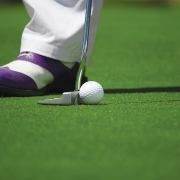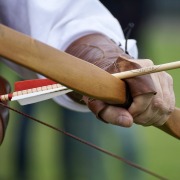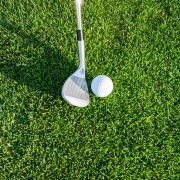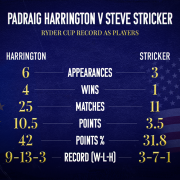How To Choose Good Golf Gear For Less
Buying golf clubs is something every beginner struggles with. Even intermediate players have a hard time choosing the appropriate set. That’s mostly because there are plenty of golf sets coming in different designs. The golf lingo can also get very confusing for people who are still trying to learn their way around the game.
In this guide, we will give you some pro-tips that will help you make an informed decision when shopping for golf clubs.
Choosing The Type Of Club
There are generally five types of golf clubs.
Drivers
Drivers may also be sold alongside fairway woods under the woods category. And although they are sold under woods, they are not usually made from this material.
The purpose of drivers is to hit the ball as far as possible. For a beginner, the range may be the only priority. However, intermediate to advanced players should also think about precision.
But what exactly determines the range and precision of a club? Distance and accuracy are affected by the materials used and the size of the club.
Most drivers have graphite and steel shafts with an alloy or aluminum clubhead. The majority of these clubs are bigger in size, which makes it easier to make long shots.
Carbon fiber is also fairly common, but it’s pretty expensive. The material is lightweight, so it offers better control and precision.
Irons
An iron set comes with a 4-, 5-, 6-, 7-, 8-, 9-iron, and a pitching wedge. The number represents the loft angle. The higher the number, the bigger the loft.
A club with a high loft will hit the ball higher than one with a lower loft. You’ll want such a club if you are shooting out of the sand bunker.
Iron sets are usually used from the fairway. Some golfers may also use them for tee shots.
These clubs are designed with grooves that grip the ball and generate some backspin. The spin helps land the ball at an angle to reduce the roll and keep it within the green. Don’t spin the ball too much, though, as it can roll the ball further from the hole.
Wedges
Wedges are sometimes sold under irons, but they can also be grouped as standalone clubs.
There are four common types of wedges; pitching wedge, sand wedge, gap wedge, and lob wedge. All wedges have a high loft, making them ideal for pitches and chips near the green. The loft angle is also perfect for making shots out of the sand bunkers.
Putters
Putters are arguably the most important clubs in your set. As the name suggests, they are used to put the ball in the hole.
Putters can be categorized into two groups; blade and mallet putters. Blade putters are smaller in size, so they are ideal for accurate players.
Mallet putters have larger heads, making them more forgiving to poor shots. These are recommended to beginners.
Hybrids
Hybrids are a blend of irons and woods. As the specialists at AEC Info explain, these clubs are designed to give what fairway woods and irons have to offer. It helps you get out of spots where a fairway would struggle.
They also replace irons like 3- and 4- and that’s why they have a similar naming format as iron clubs.
Hybrids offer better playability than irons. They produce better contact, helping newbies to contact the ball better and hit it further.

Choosing A Grip
Golf club grips come in different sizes, textures, and designs. The goal is to get a grip that is super comfortable in your hands. It should also complement your playing style.
Individuals with bigger hands are likely to get better performance from clubs with thicker grips.
The beauty of modern clubs is you can always switch out the grip if it doesn’t meet your expectations. This may be an extra cost, but it’s definitely worth it if it’s going to improve your game.
Choosing A Shaft
Club shafts are designed with various materials and flex. Graphite and stainless steel are fairly popular because they are affordable and offer decent swing speed. However, they are heavier than carbon fiber clubs.
And how is flex important? A club flex can help you generate a higher ball speed. This is useful for beginners, seniors, and ladies with slow swing speed. The high flex compensates for your lower swing speed to give you longer shots.
However, experienced golfers with better swing speed will find stiffer shafts more beneficial.
Choosing A Hosel
The hosel determines the lie angle of your golf club. It’s crucial to get a club with a lie angle that blends with your swing and height. Alternatively, you can purchase clubs with adjustable hosels that allow you to customize the angle on demand.
Choosing A Clubhead
The size of the clubhead directly affects how you hit the ball. Beginners should go for bigger heads as they are more forgiving. They will help you make excellent contact and generate decent speed even when your swings are below average.
Sadly, bigger heads make the club heavier, and this can negatively impact control. This explains why experienced golfers prefer smaller clubheads.
It’s clear that golfing gears work differently for different players. Therefore, don’t make your decision based on some else’s plays with specific gear. This guide should help you find something that’s perfect for your unique playing style and abilities.









Leave a Reply
Want to join the discussion?Feel free to contribute!